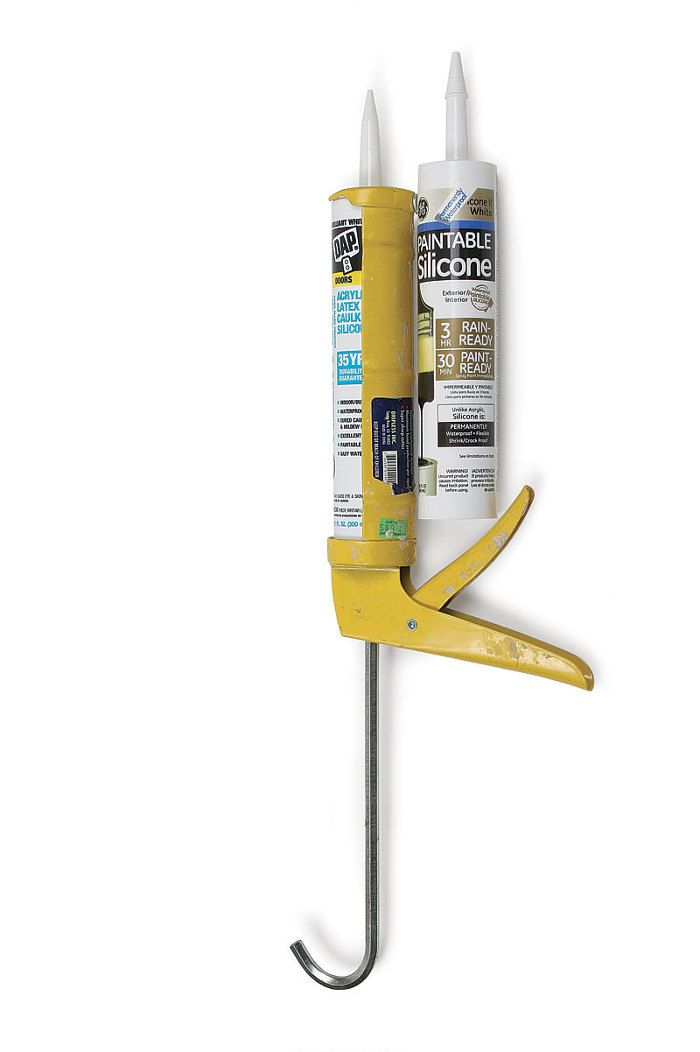What's the Difference: Paintable Caulks and Sealants
Interior vs. exterior

Nearly every discussion about caulks and sealants begins by acknowledging that there is a bewildering array of these products on the market, each of which is formulated out of a wide balance of compounds for either specific or general applications. The very terms caulk and sealant can be confusing, as there is no industry standard to distinguish the two. Generally, the distinction is qualitative: Caulk is a lower grade of sealant. Pure silicone is a superior sealant for most substrates. It’s waterproof and holds up to UV exposure and weather extremes; however, it cannot be painted. The great race with manufacturers has been to develop a product that exploits the UV resistance, flexibility, and waterproofing of silicone, combined with the ease of application, paintability, and enhanced substrate adhesion of other compounds. An advanced degree in chemistry isn’t required to make sense of these products, but you do need to know the gap you’re going to fill.
Water-based works best inside
For certain interior applications—such as baseboards, windows, doors, and trim—water-based caulks are the ideal choice. While these products are often marketed for interior or exterior use, they perform best indoors—that is, as long as the area won’t face major temperature changes, heavy UV exposure, or high moisture levels. A variety of terms is associated with this affordable class of products, including vinyl, acrylic, latex, latex-acrylic, and acrylic-latex. Better-quality versions are referred to as siliconized latex, siliconized acrylic, or latex plus silicone. They usually contain a small amount (less than 2%) of silane, a form of silicone, to promote better flexibility and adhesion. Special paintable, siliconized latex formulations that include an antimicrobial or biocide additive for wet-prone areas are available and are often labeled “kitchen and bath” or “tub and tile.” These products are easy to smooth into joints with a finishing tool or wet finger, and any excess can be cleaned up with water. You can also find a wide palette of color choices if you don’t want to paint.
TRIM DAP ALEX Acrylic Latex Caulk plus Silicone or White Lightning 3006; around $2 per tube
WET AREAS DAP 3.0 Kitchen and Bath with Microban or White Lightning Kitchen and Bath Latex Ultra with EcoGuard; around $5 per tube
Hybrids own the outdoors
For exterior applications—such as windows, siding, and doors—there is a large class of hybrid sealants on the market. First developed in Japan over 30 years ago, these have been slow to gain widespread use in the United States and remain three times more expensive than simple water-based caulks. Labeled as “hybrid” or “paintable silicone,” modified-silicone polymers or silane-modified polymers (SMPs) have become increasingly exotic as manufacturers have tried to create a single product that features ease of application, paintability, superior adhesion, flexibility, and durability in all manner of weather. Despite their complex chemistry, hybrid sealants have low concentrations of volatile organic compounds (VOCs). All of them require mineral spirits for cleanup.
These products are labeled as being paintable. Still, a product may not adhere well or last long if it’s not the right product in the right place under the right conditions. Knowing where you need to apply the product, and weighing that against the label, will help. Checking the label includes checking the expiration date.
GE Paintable Silicone II; $10 per tube
Loctite 5510 SMP Sealant; $15 per tube
3M Hybrid Sealant 755; $10 per tube
Photo: Rodney Diaz





















